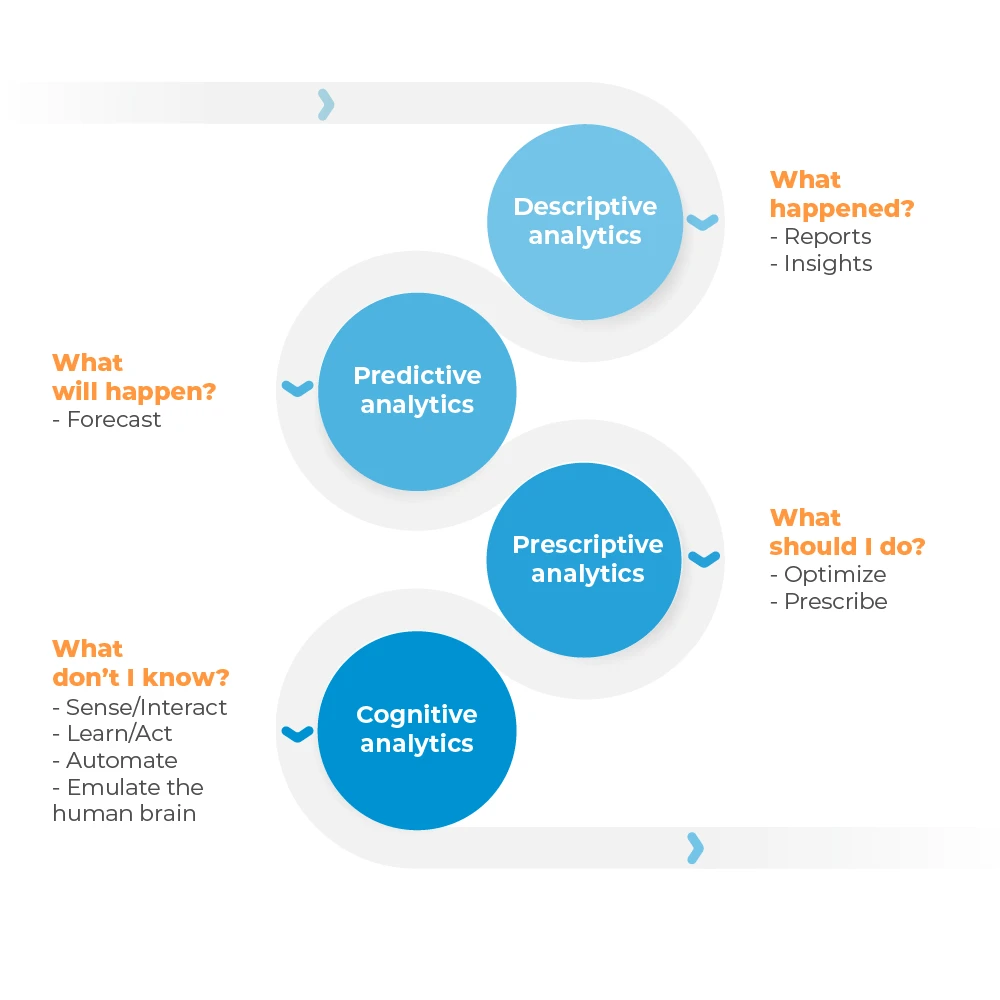Over the past decade, the rapid evolution of data analytics has been unprecedented. Due to the emergence of new technologies such as Artificial Intelligence and Big Data, it has become more important than ever that organizations understand the value of data analytics. Unfortunately, many people are still not able to fully grasp the value it provides.
At Explora, we believe that data analytics is a combination of business knowledge and mathematical elegance. Through this approach, we can remove the "human bias" in the equation, which provides a more accurate prediction.
Throughout the blog, learn about the analytics evolution over time, and how it relates to retailers.

Descriptive Analytics
The first phase of the analytics evolution has been around for decades. Known as descriptive analytics, it consists of reports and insights used to answer the following question: What happened?
This form of analytics uses business intelligence, a data warehouse that allows us to put all data together in one place, with a user interface component on top.
Perhaps the most important benefit of descriptive analytics is being able to slice and dice the information in many different ways to understand what happened in the past.
Predictive Analytics
Now that we have the opportunity to know what happened in the past, can we predict the future? This is where predictive analytics comes into play.
Predictive analytics uses a variety of statistical techniques that examines past and current data to make predictions about the future. This insight can inform decisions that ultimately reduce costs and increase profits.
Prescriptive Analytics
This form of analytics takes data one step further, aiming to optimize and prescribe a course of action for what you should be doing.
Though prescriptive analytics helps identify the best set of decisions that will help result in optimizing a business objective. To be effective, the individual leveraging prescriptive analysis must possess extensive domain knowledge of the business. This means understanding the terminology, processes, and language to truly understand what needs to be done and the business limitations relevant to their decisions. With a clear understanding of the necessary business decisions, realistic constraints, and overall objectives, prescriptive analytics can provide a viable path to a solution.
Cognitive Analytics
The previous phases of the analytics evolution allowed us to understand what happened in the past, what will happen in the future, and prescribe the best course of action in a given scenario. But what about a system that utilizes an algorithm to learn from past decisions and adapt accordingly?
This concept is quickly becoming a reality with Cognitive Analytics. Though we are only in the early stages, Cognitive Analytics is all about sense, interaction, learning, acting, automating, and emulating the human brain.
It is important to note, that the more we move to Cognitive Analytics, the more we need Artificial Intelligence (AI) and Machine Learning (ML) to automate our processes!



